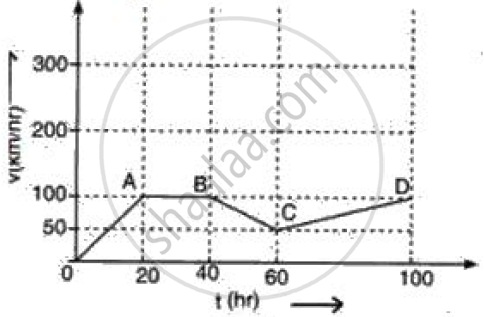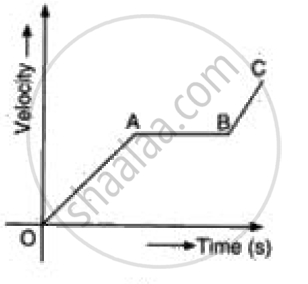Advertisements
Advertisements
Question
Figure represents graphically the velocity of a car moving along a straight road over a period of 100 hours.
Calculate the acceleration along AB and the retardation along BC.
Solution

Acceleration along AB= (100 - 100)/(40 -20) = 0 ms-2
Retardation along CD= (100 - 50)/ (100 - 60) = 50/40 = 1.25 ms-2
APPEARS IN
RELATED QUESTIONS
Draw a graph for acceleration against time for a uniformly accelerated motion. How can it be used to find the change in speed in a certain interval of time?
A train moving with a velocity of 20 m s-1 is brought to rest by applying brakes in 5 s. Calculate the retardation.
From the velocity – time graph given below, calculate deceleration in region BC.

A truck running at 90 kmh−1, is brought to rest over a distance of 25 m. Calculate the retardation and time for which brakes are applied.
Interpret the following graph:
A bus can accelerate with an acceleration of 1 m/s2 . Find the minimum time for the bus to attain the speed of 100 km/s from 50 km /s.
When a body starts from rest, the acceleration of the body after 2 seconds in ______ of its displacement.
The speed of a particle is constant. Will it have acceleration? Justify with an example.
What is meant by negative acceleration?
Assertion: Position-time graph of a stationary object is a straight line parallel to the time axis.
Reason: For a stationary object, the position does not change with time.
